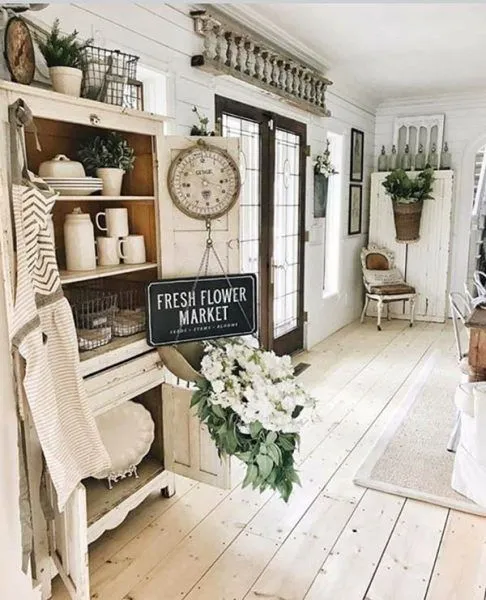What Defines Farmhouse Kitchen Decor?
Farmhouse kitchen decor has steadily grown in popularity, becoming a beloved style for its warmth, simplicity, and inviting atmosphere. It’s a design aesthetic that embraces comfort and functionality, drawing inspiration from rural homes and a connection to the land. But what exactly makes a kitchen ‘farmhouse’? It’s not just about placing a few rustic elements; rather, it is about creating a cohesive and well-planned space that feels both lived-in and stylish. The appeal of this style lies in its versatility, easily adaptable to various tastes and budgets. Whether you are starting from scratch or simply looking to refresh your existing kitchen, understanding the core principles of farmhouse decor is the first step toward achieving the desired look. Farmhouse kitchens are about creating a space that feels like the heart of the home, a welcoming spot for cooking, gathering, and making memories.
Key Elements of Farmhouse Style
Several key elements define the farmhouse style, providing a foundation for a successful design. These elements work together to create a cohesive and visually appealing space. One crucial component is the emphasis on natural materials. Think of exposed wood, whether it’s in the form of beams, flooring, or furniture. Reclaimed wood is particularly popular, adding character and a sense of history. Another important element is the use of neutral colors as a base. Soft whites, creams, and grays create a sense of airiness and allow other elements to shine. The incorporation of vintage or antique pieces is another hallmark, contributing to the lived-in feel. Items like old signs, repurposed furniture, or vintage kitchenware add personality and charm. Finally, a touch of greenery, such as herbs or potted plants, can breathe life into the space, connecting the indoors with the natural world.
Color Palette and Materials
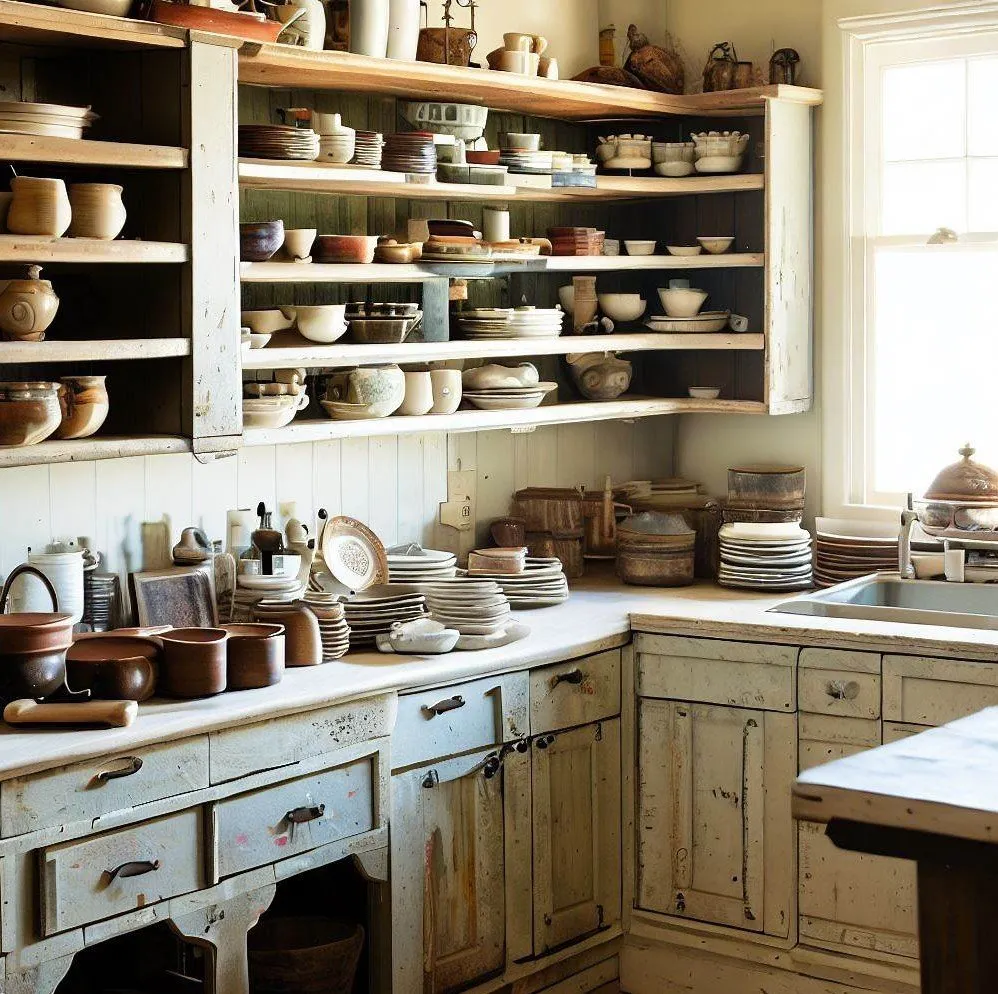
The color palette and choice of materials are crucial for establishing a true farmhouse aesthetic. As mentioned before, a foundation of neutral colors is key. White is a staple, providing a clean and bright backdrop that allows the other elements to stand out. Cream and off-white tones can add warmth, especially in kitchens that may not receive a lot of natural light. Gray can be used to add depth and contrast, either on walls or cabinetry. Beyond the base colors, consider incorporating natural wood tones. Unpainted wood, stained wood, or even painted wood with a distressed finish can all contribute to the farmhouse look. For materials, prioritize natural options like wood, stone, and metal. Butcher block countertops, exposed brick, and metal accents can add texture and visual interest. Textiles should also be carefully considered, opting for natural fabrics like cotton, linen, and burlap in the form of curtains, tablecloths, or throw pillows.
Essential Farmhouse Kitchen Decor Elements
Certain elements are indispensable for achieving the farmhouse look. These features work together to create the desired ambiance and functionality of the kitchen. One of the most recognizable elements is the farmhouse sink, often a large, apron-front sink that adds a touch of rustic charm. Open shelving is another key feature, providing both storage and a place to display decorative items. Rustic lighting, such as pendant lights made from metal or mason jars, can enhance the overall feel. Furniture is also important. A large farmhouse table with mismatched chairs, or a kitchen island with seating, can serve as a central gathering spot. Incorporating these elements creates the quintessential farmhouse kitchen atmosphere, ready for everyday use and family gatherings. Remember that the key is to strike a balance between practicality and aesthetic, making the kitchen a functional yet beautiful space.
Farmhouse Kitchen Decor Ideas for Your Kitchen
Now, let’s dive into specific ideas on how to implement the farmhouse style in your kitchen. These elements can be customized to create a kitchen design that reflects your style, needs, and preferences. You will want to start with the walls. Consider adding shiplap, beadboard, or simply painting them a neutral color. Choose cabinets made of wood, and consider a distressed or painted finish. Add open shelving to showcase your favorite dishes, and incorporate a farmhouse sink. Don’t forget to include a large kitchen island with seating to use as the focal point for social gatherings. Lighting can include pendant lights, track lighting, and even chandeliers to add warmth and character. Accessories are also essential. These include vintage signs, reclaimed wood elements, and woven baskets. Combining these features, you can develop a welcoming kitchen that is perfect for cooking and gathering.
Incorporating Vintage Accents
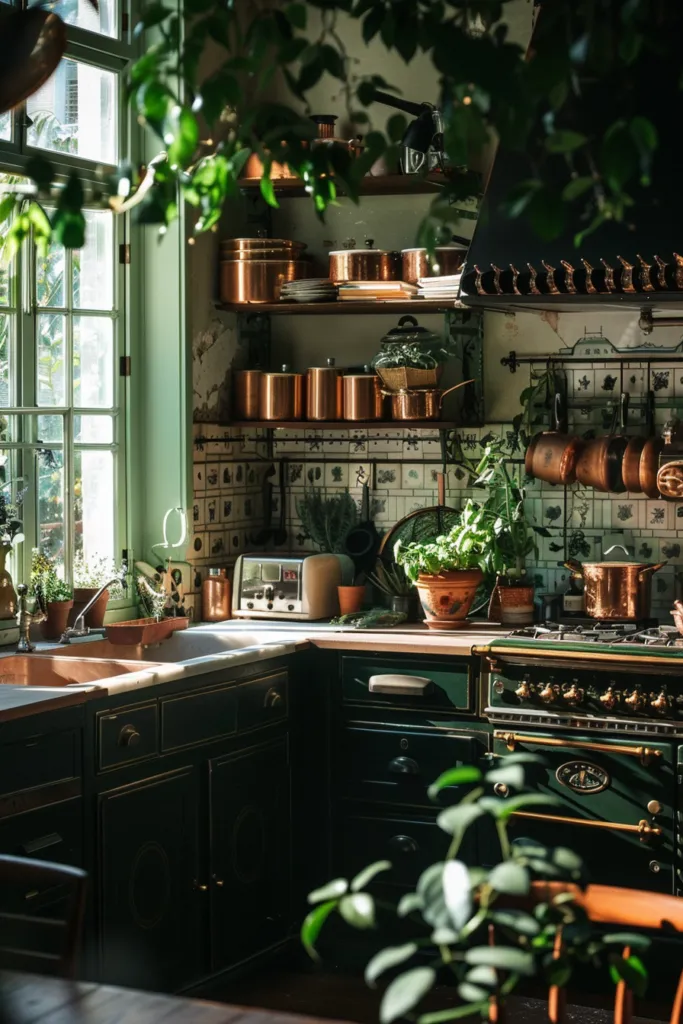
Vintage accents are the heart of farmhouse kitchen decor. They add character, personality, and a touch of history to the space. Consider using vintage kitchenware, such as enamelware, mason jars, and antique mixing bowls, as decorative elements. These pieces can be displayed on open shelves or countertops. Old signs, especially those with a rustic or humorous message, can be hung on walls to add a bit of character. Other vintage finds, such as antique scales, clocks, or cutting boards, can also enhance the overall aesthetic. The key is to curate a collection of items that reflect your personality and taste. Mixing and matching vintage pieces with modern elements can create a unique and personalized look. Shopping at flea markets, antique stores, and online marketplaces is a great way to find these treasures.
Adding Rustic Furniture
Rustic furniture is a core element of farmhouse kitchen decor, contributing to the cozy and inviting atmosphere. A large farmhouse table with mismatched chairs is a classic choice, providing a central gathering spot for meals and conversations. Opt for a table made of reclaimed wood or with a distressed finish to enhance the rustic feel. Kitchen islands are another great option. Choose a kitchen island with a butcher block countertop and open shelving for storage. Consider adding a bench with a cushion for seating or a collection of stools with varying styles to create a casual and relaxed vibe. Furniture should be chosen for its durability and functionality. Reclaimed wood is an excellent choice for furniture. The imperfections and unique character add to the rustic charm.
Choosing the Right Lighting
The right lighting is crucial for both functionality and aesthetics in a farmhouse kitchen. It sets the mood and enhances the overall design. Consider using a combination of lighting sources, including ambient, task, and accent lighting. Pendant lights over the kitchen island or sink are a popular choice, adding both task lighting and a touch of style. Look for pendant lights made of metal, mason jars, or other rustic materials. Chandeliers can be used to add an element of elegance, especially over the dining table. Task lighting is crucial for the area, so consider using under-cabinet lighting and recessed lights to illuminate work surfaces. Don’t forget about natural light. Make sure windows are not obscured by heavy curtains. If possible, maximize the amount of natural light to create a bright and airy space.
Practical Considerations for Farmhouse Kitchen Design
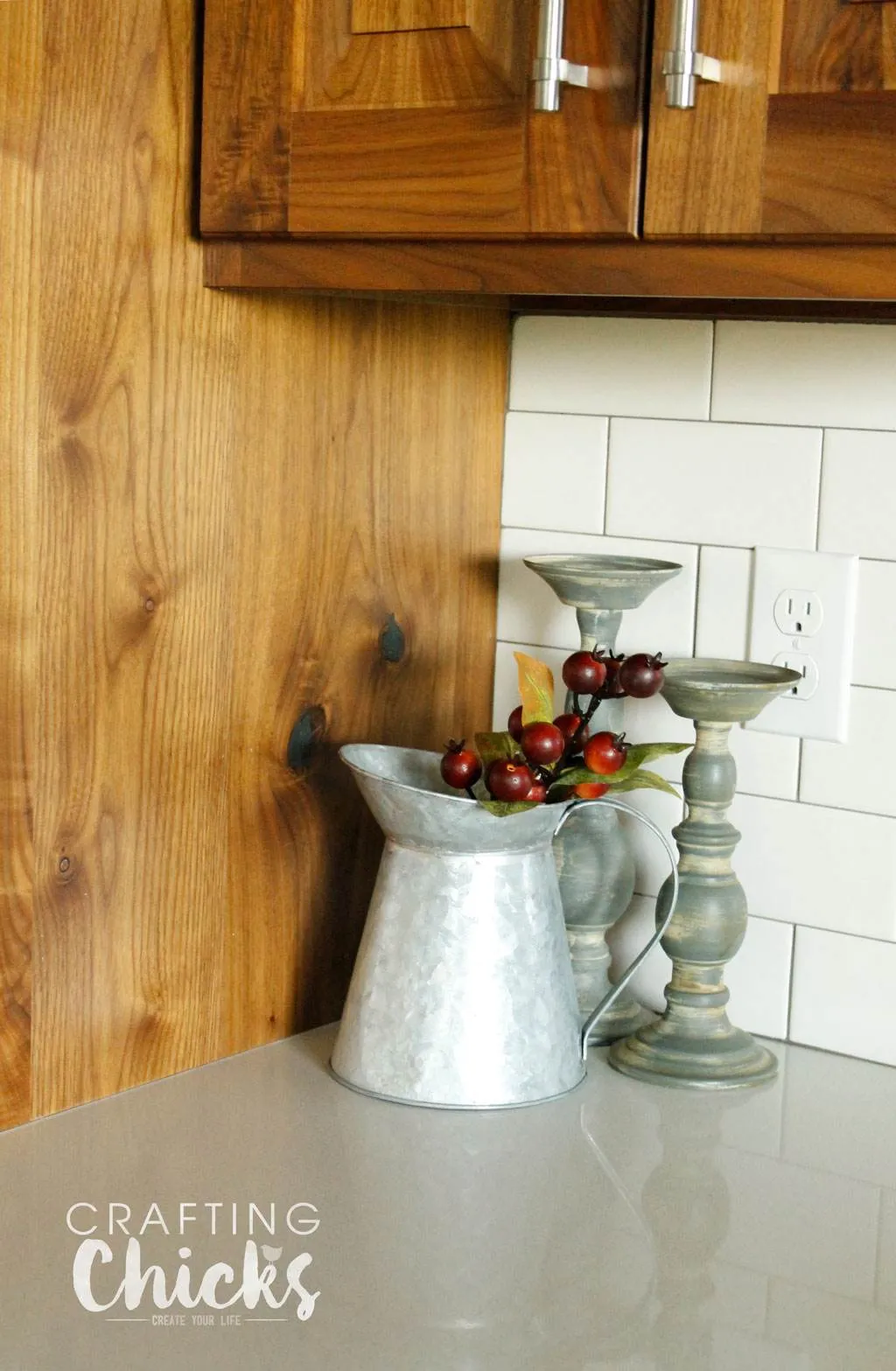
While aesthetics are important, practical considerations are vital to creating a functional and efficient farmhouse kitchen. Before you start renovating or redecorating, make sure you consider the layout, storage solutions, and materials. All these considerations can have a dramatic impact on your daily kitchen routine. The more carefully you plan, the more likely you are to create a kitchen that works seamlessly with your lifestyle. By focusing on both beauty and practicality, you can make your farmhouse kitchen a joy to use and experience.
Functionality and Flow
When planning your farmhouse kitchen, consider the functionality and flow of the space. The layout should be designed to streamline your cooking process. The work triangle (the area between the sink, stove, and refrigerator) should be efficient and accessible. Make sure there’s enough counter space for food preparation and that appliances are strategically placed. Consider how you’ll use the kitchen on a daily basis and design the space to meet your needs. Ample workspace is essential. The placement of the dining area should also be considered to make it a welcoming space for meals. A well-designed kitchen should minimize movement and maximize efficiency, making cooking and entertaining a breeze. Careful planning of the layout is crucial for creating a functional and enjoyable kitchen.
Storage Solutions
Storage is a significant part of creating a practical kitchen. A well-organized kitchen is a happy kitchen. There are many storage solutions to choose from, from cabinets and drawers to open shelving and pantries. Cabinets should be designed to maximize storage space while maintaining the farmhouse aesthetic. Consider adding pull-out shelves or lazy Susans for added convenience. Open shelving is a great way to display decorative items and frequently used dishes, but it’s essential to keep it organized to avoid a cluttered look. A pantry is an excellent addition, providing space for storing food and kitchen supplies. Optimize the use of drawers. Incorporate deep drawers for pots and pans and shallow drawers for utensils and cutlery. Don’t forget about the potential for built-in storage, such as a breakfast nook with storage benches or a kitchen island with built-in drawers and cabinets. The key is to find solutions that fit your specific needs and keep your kitchen tidy and efficient.
Maintenance and Durability
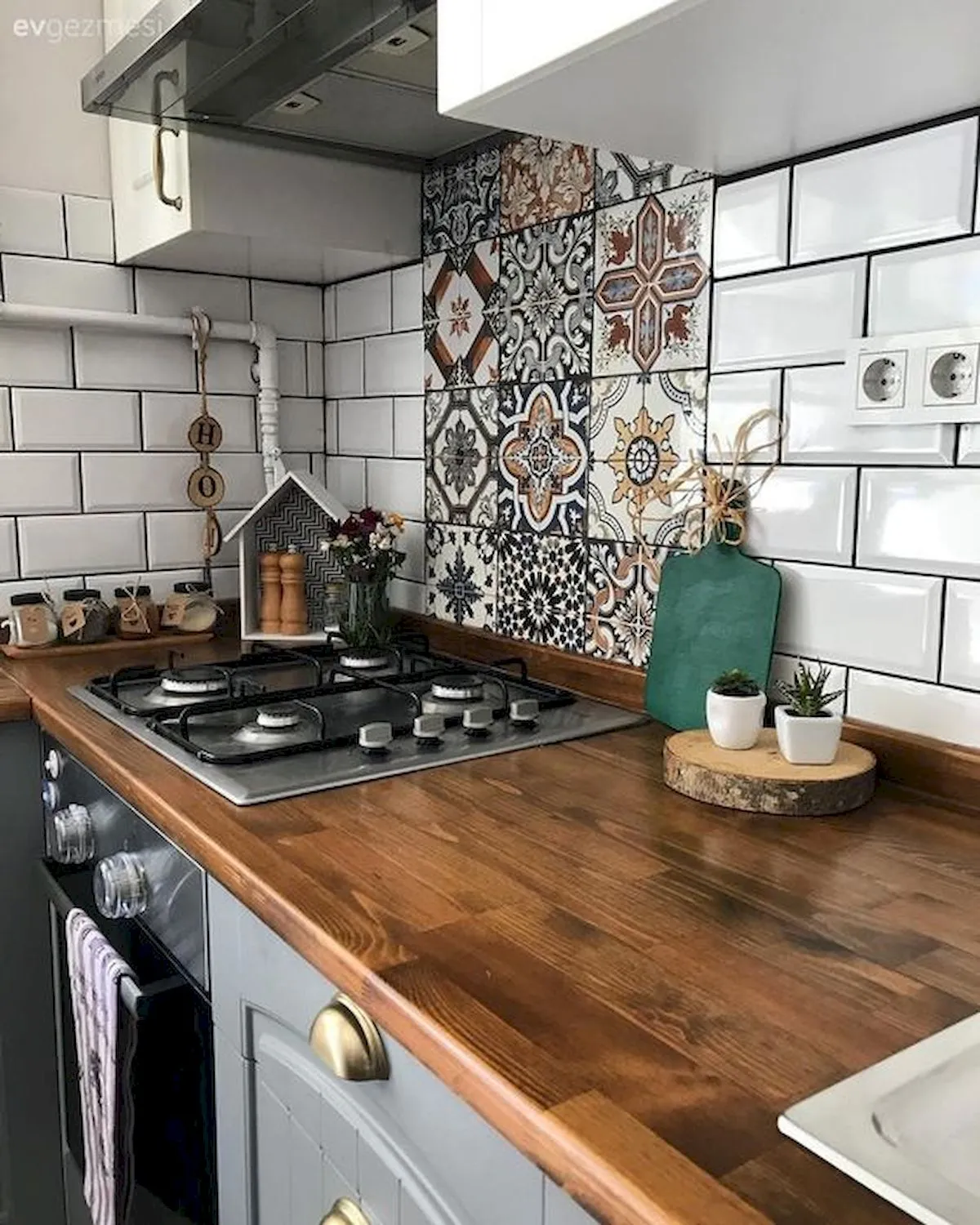
When choosing materials for your farmhouse kitchen, consider the maintenance and durability of each one. Kitchens are high-traffic areas, so it’s important to select materials that can withstand daily use. Choose durable countertops, such as quartz, granite, or butcher block. Quartz is known for its stain resistance, while granite offers a natural look and is very durable. Butcher block, if properly sealed, can add warmth and character. Flooring should be easy to clean and maintain. Consider tile, wood, or luxury vinyl plank flooring, all of which are excellent choices. Cabinets should be made of sturdy materials that are resistant to wear and tear. When selecting appliances, choose energy-efficient models that are designed to last. Consider the long-term maintenance requirements of each material. For example, wood surfaces may need to be sealed and refinished, while tile and quartz are usually easier to maintain. By prioritizing durability and maintenance, you can ensure that your farmhouse kitchen will stay beautiful and functional for years to come.
Common Mistakes to Avoid
While designing a farmhouse kitchen, it’s easy to make mistakes. Many mistakes can be easily avoided with careful planning and execution. Avoid some of the most common pitfalls to create a beautiful and functional kitchen. Taking the time to research and plan your design will help you create a space that you’ll love for years to come. This can lead to a smoother, more enjoyable design process. Remember that the goal is to create a space that is both stylish and practical.
Overcrowding the Space
One of the most common mistakes is overcrowding the space. Avoid filling your kitchen with too many elements, which can make it feel cramped and cluttered. Stick to a limited number of key features, such as a farmhouse sink, open shelving, and a rustic table. Ensure you’ve enough space. Do not put too many decorative items, and prioritize functionality. The key is to maintain a sense of airiness and openness. A minimalist approach can be very effective, allowing the farmhouse elements to shine without overwhelming the space. Choose items that you love. Do not add a lot of unnecessary clutter. Make sure to balance functionality and aesthetics.
Ignoring the Kitchen’s Layout
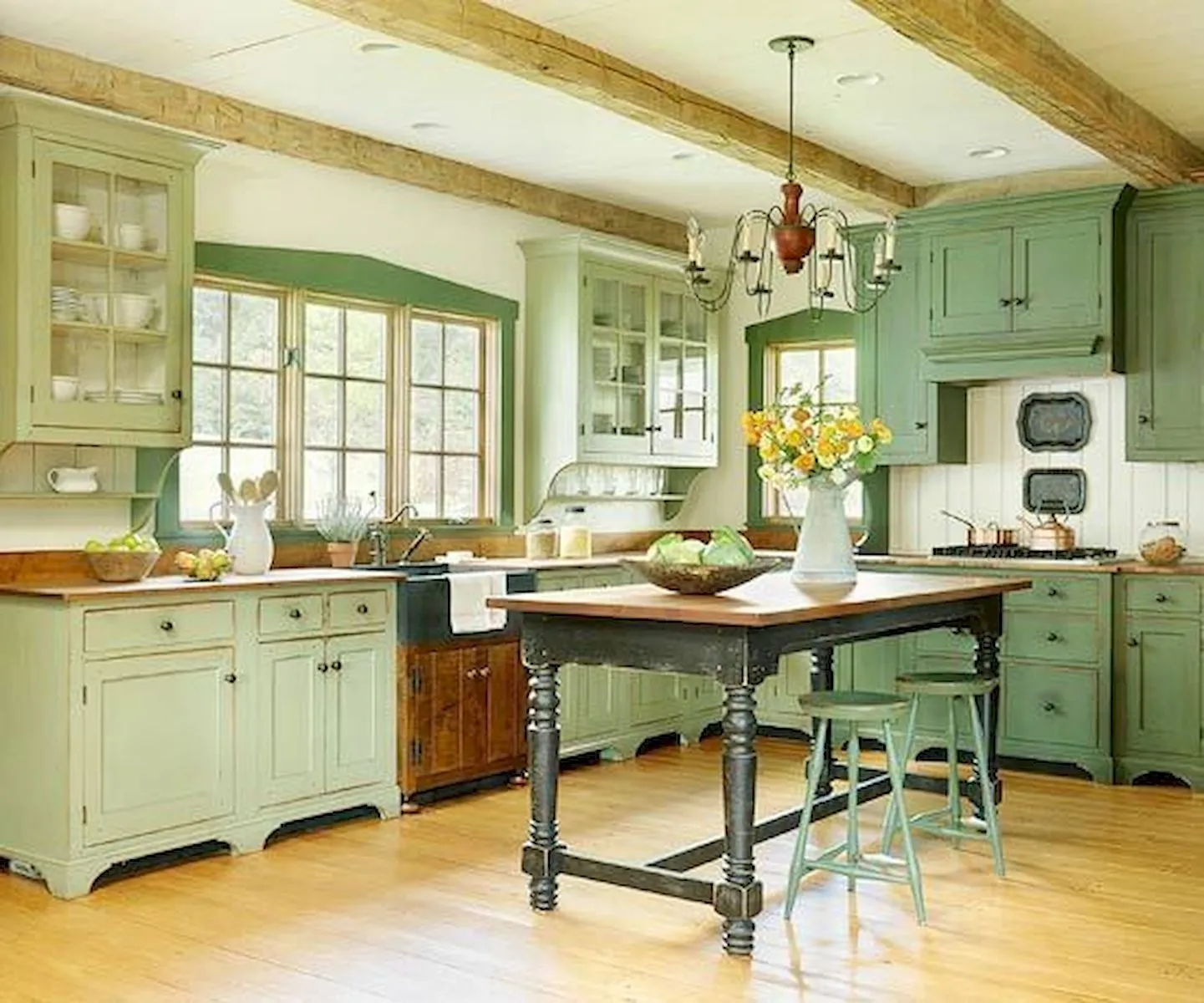
Another common mistake is ignoring the existing kitchen layout. Before you start renovating, take a good look at the current layout and determine its strengths and weaknesses. Consider how the space can be improved to maximize efficiency and flow. Make sure the work triangle (the area between the sink, stove, and refrigerator) is well-placed and easy to navigate. Ensure that there’s enough counter space for food preparation and that the placement of appliances is logical. A well-designed kitchen should streamline the cooking process and make it a pleasure to use. If you’re planning a major renovation, consider consulting with a kitchen designer who can help you create a layout that fits your needs and style.
Mixing Too Many Styles
It can be tempting to incorporate various styles, but avoid mixing too many styles in your farmhouse kitchen. Sticking to a cohesive theme is essential for creating a unified and harmonious space. If you love other styles, try to integrate them subtly or using complementary elements. Farmhouse style is based on simplicity and warmth, so try not to clash too much with the core elements. The goal is to create a space that reflects your style and creates a warm and inviting atmosphere, and you can easily do that by staying true to the farmhouse theme.
Conclusion
Farmhouse kitchen decor is a charming and versatile style that can transform your kitchen into the heart of your home. By understanding the key elements, incorporating the right materials and colors, and avoiding common mistakes, you can create a space that is both beautiful and functional. The farmhouse style embraces comfort, simplicity, and a connection to the natural world. Farmhouse kitchen decor is adaptable to a variety of tastes and budgets. By following the tips and ideas in this guide, you can create a kitchen that reflects your personality, meets your needs, and brings joy to your everyday life. Now, you are ready to embrace the charm and warmth of farmhouse kitchen decor and create a space you’ll love for years to come.
